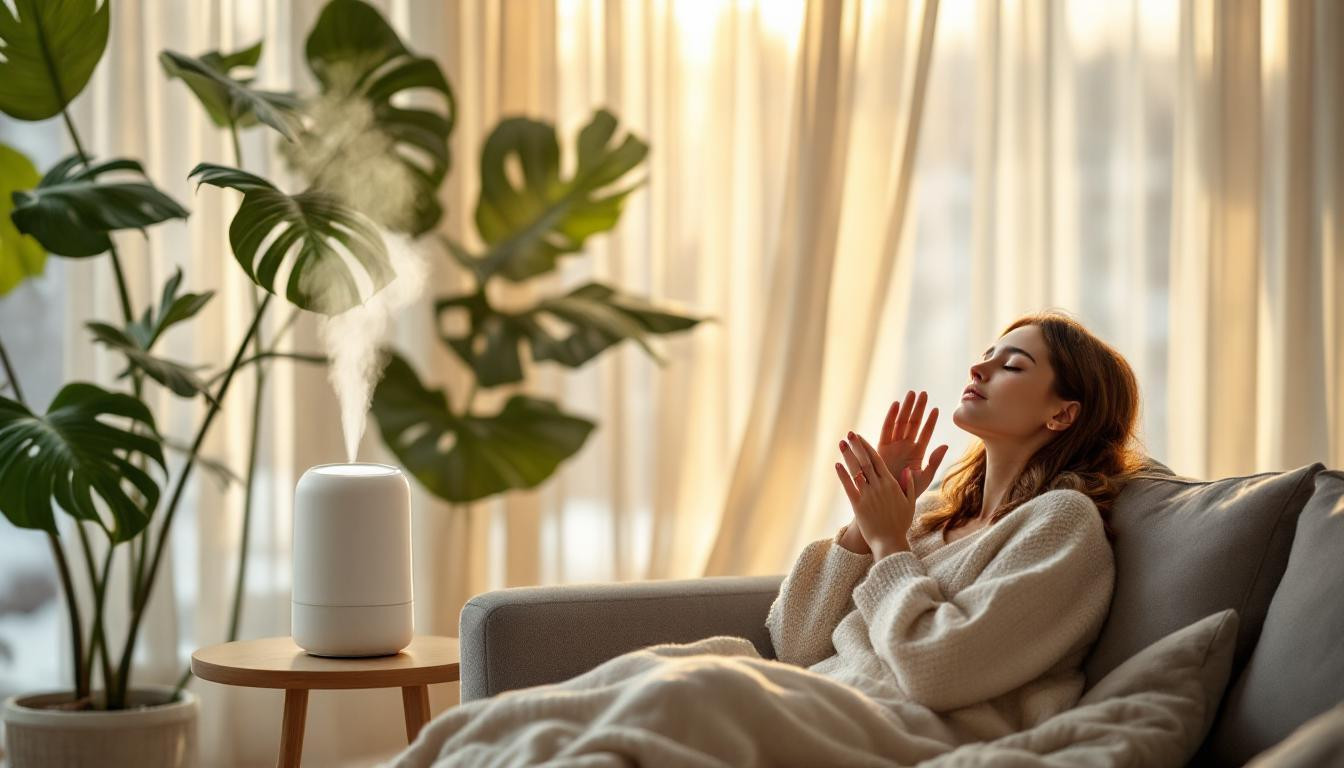Did you know that the air you breathe at home could be silently affecting your respiratory health? Studies show that maintaining indoor humidity between 30-50% can reduce respiratory symptoms by up to 40%, yet most Americans have no idea what their home’s humidity level is.
The hidden impact of humidity on breathing
Humidity levels act as invisible modulators of respiratory wellness, influencing everything from how easily we breathe to how vulnerable we are to infections. When humidity drops too low, our respiratory defenses weaken significantly.
“Low humidity essentially creates a highway for viruses to enter our respiratory system,” explains Dr. Sarah Mendez, pulmonologist at Austin Respiratory Center. “The protective mucous membrane in our airways becomes dry and compromised, making us more susceptible to infections and irritation.”
This effect is particularly pronounced in winter months, when indoor heating systems can drop humidity to desert-like levels. Many respiratory complaints that people attribute to “winter colds” are actually reactions to excessively dry air.
Finding your humidity sweet spot
The ideal humidity range resembles a delicate balance beam. Too high (above 60%), and you create a breeding ground for allergens; too low (below 30%), and respiratory tissues become parched and vulnerable. This balance is especially crucial for those with pre-existing conditions.
- Use a hygrometer to monitor home humidity levels
- Aim for 40-50% humidity during winter months
- Adjust levels based on outdoor climate conditions
After struggling with chronic sinus infections, Marta Chen discovered her apartment’s humidity measured just 18% during winter. “I installed a humidifier and began doing regular sinus massage,” she recalls. “Within three weeks, my breathing improved dramatically, and I haven’t had a sinus infection since.”
The surprising connection to sleep quality
Humidity doesn’t just affect daytime breathing—it significantly impacts sleep quality. When airways become dry and irritated, sleep disturbances follow. This creates a fascinating connection between humidity and circadian rhythms.
“We’ve observed that optimizing bedroom humidity can improve sleep efficiency by 15-20%,” notes sleep researcher Dr. James Wilson. “It’s a powerful environmental intervention that works in conjunction with morning light exposure to regulate sleep patterns.”
Think of your airways as delicate garden soil that requires proper moisture to flourish. Too dry, and nothing grows; too wet, and mold takes over. Your respiratory system functions best with similar balanced hydration.
Natural strategies for optimal humidity
- Incorporate indoor plants that naturally release moisture
- Leave bathroom door open after showering (when appropriate)
- Consider forest bathing for natural humidity exposure
Those experiencing persistent sinus issues should also consider how humidity interacts with other health factors. Women experiencing menopause may find humidity particularly important, as hormonal changes can affect sinus health.
Environmental toxins can compound humidity effects. Consider that reducing microplastic exposure alongside humidity optimization creates a powerful respiratory protection strategy.
Take action today: Measure your home’s humidity level and make small adjustments toward the optimal range. Your respiratory system responds quickly to improved conditions—many people report feeling relief within 48 hours of optimizing humidity. Isn’t it time you discovered what breathing in properly humidified air could do for your wellness?
